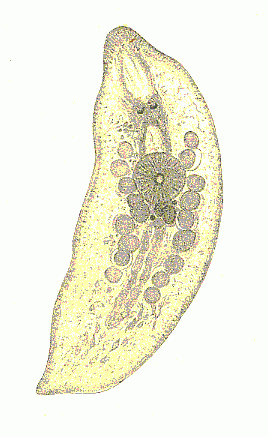Turbellarian WoRMS portal launched
A new World list is made available on the Turbellarian worms, including the Acoelomorpha, Catenulida and Rhabditophora. This World List now contains 3.425 accepted species names and is one of the most complete existing resources for Turbellarian taxa.

The Turbellarian Taxonomic Database is a tremendous resource for Turbellarian information and one of the taxonomic databases of WoRMS hosted externally. The collaboration between its curator - Seth Tyler - and WoRMS originates from 2009-2010, when a first update from the Turbellarian database to WoRMS was made. After that, it went quiet for a while, until this collaboration was revived during the AquaRES project (2014-2016).
The first conversations between WoRMS, Tom Artois and Seth Tyler were initiated during the AquaRES project. AquaRES was a collaboration between FADA – the Freshwater Animal Diversity Assessment – and WoRMS. The aim of the project was to look at taxonomic groups with representatives in both the marine and the freshwater environment and (partly) managed both in FADA and WoRMS. As the Platyhelminthes are a ‘mixed’ group in terms of environment – and are managed in 3 (!) different databases: FADA, WoRMS & Turbellaria Taxonomic Database – they were an excellent case study for the project, specifically to look for possibilities to lessen the workload for the involved editors Seth Tyler and Tom Artois.
A new synchronization between the Turbellaria Taxonomic Database and WoRMS was initiated in 2016, with a focus on taxonomy and distributions. This has led to the addition of 1.197 taxa, an update of 1.540 taxa and an addition of 23.535 distribution records to WoRMS, including a lot of type localities. Updates of existing records mostly concerned the documentation of the original reference and an update or check of the current status of the name. In parallel, it was decided that the freshwater Platyhelminthes would no longer be curated in the FADA database, but rather to establish a dynamic data flow of its freshwater taxa from WoRMS to FADA.
The Turbellarian WoRMS portal is supported by LifeWatch Belgium, part of the E-Science European LifeWatch Infrastructure for Biodiversity and Ecosystem Research. LifeWatch is a distributed virtual laboratory which is used for different aspects of biodiversity research. The Taxonomic Backbone of LifeWatch aims at bringing together taxonomic and species-related data and at filling the gaps in our knowledge. The transfer of the data available in the Plathelminthes portal of Seth Tyler into the Aphia platform ensures its accessibility to the scientific community and the broader public, avoiding loss of these valuable data.
The first conversations between WoRMS, Tom Artois and Seth Tyler were initiated during the AquaRES project. AquaRES was a collaboration between FADA – the Freshwater Animal Diversity Assessment – and WoRMS. The aim of the project was to look at taxonomic groups with representatives in both the marine and the freshwater environment and (partly) managed both in FADA and WoRMS. As the Platyhelminthes are a ‘mixed’ group in terms of environment – and are managed in 3 (!) different databases: FADA, WoRMS & Turbellaria Taxonomic Database – they were an excellent case study for the project, specifically to look for possibilities to lessen the workload for the involved editors Seth Tyler and Tom Artois.
A new synchronization between the Turbellaria Taxonomic Database and WoRMS was initiated in 2016, with a focus on taxonomy and distributions. This has led to the addition of 1.197 taxa, an update of 1.540 taxa and an addition of 23.535 distribution records to WoRMS, including a lot of type localities. Updates of existing records mostly concerned the documentation of the original reference and an update or check of the current status of the name. In parallel, it was decided that the freshwater Platyhelminthes would no longer be curated in the FADA database, but rather to establish a dynamic data flow of its freshwater taxa from WoRMS to FADA.
The Turbellarian WoRMS portal is supported by LifeWatch Belgium, part of the E-Science European LifeWatch Infrastructure for Biodiversity and Ecosystem Research. LifeWatch is a distributed virtual laboratory which is used for different aspects of biodiversity research. The Taxonomic Backbone of LifeWatch aims at bringing together taxonomic and species-related data and at filling the gaps in our knowledge. The transfer of the data available in the Plathelminthes portal of Seth Tyler into the Aphia platform ensures its accessibility to the scientific community and the broader public, avoiding loss of these valuable data.



